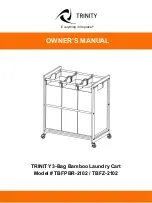
2
OPERATING INSTRUCTIONS
tained around the appliance for easy servicing.
Provision should be made for any commercial, heavy duty cooking appliance to exhaust
combustion waste products to the outside of the building. Usual practice is to place the
appliance under an exhaust hood, which should be constructed in accordance to the local
codes.
Strong exhaust fans in this hood or in the overall air conditioning system can produce a slight
vacuum in the room and / or cause air drafts, either of which can interfere with the pilot or
burner performance and could be difficult to diagnose. Air movement should be checked during
installation. Air openings or baffles may have to be provided in the room, if pilot or burner
outrage problem persists.
GAS CONNECTION:
The gas supply (service) line must be the same size or greater than the inlet line of the
appliance. Market Forge ranges and ovens use a 3/4" NPT inlet. Sealant on all pipe joints must
be resistive to LP gas.
MANUAL SHUT OFF VALVE:
This installer supplied valve must be in the gas service line ahead of the appliance and regulator
in the gas stream and in a position accessible in the event of an emergency.
PRESSURE REGULATOR:
Commercial cooking equipment must have a pressure regulator on the incoming service line for
safe and efficient operation, since service pressures may fluctuate on local demand. A pressure
regulator is packed inside every Market Forge range.
Failure to install the pressure regulator will void the appliance warranty
The regulators supplied along with Tri-star ranges, will have 3/4"inlet/outlet openings and are
adjusted at the factory for 5" WC( natural gas)orlO" WC(propane gas) depending on customer's
ordering instructions.
Prior to connecting the regulator, check the incoming line pressure, as these regulators can only
withstand a maximum pressure of 1/2" PSI (14"WC). If the line pressure is beyond this limit, a
step down regulator will be required.
The arrow shown on the bottom of the regulator body shows the gas flow direction, it should
point downstream to the appliance. The red air vent cap on the top is part ofthe regulator and
should not be removed.
Any adjustments to the regulator should be made by qualified service p~rsonnel only with the
proper equipment.
CONNECTIONS:
Please check installer supplied intake pipes visually and / or blow them with compressed air to
clear any dirt particles, threading chips or any other foreign matter before installing a service
line. When gas pressure is applied, these particles could clog orifices.
All connections must be sealed with a joint compound suitable for LP gas, and all connections
must be tested with a soapy water solution before lighting any pilots.






























